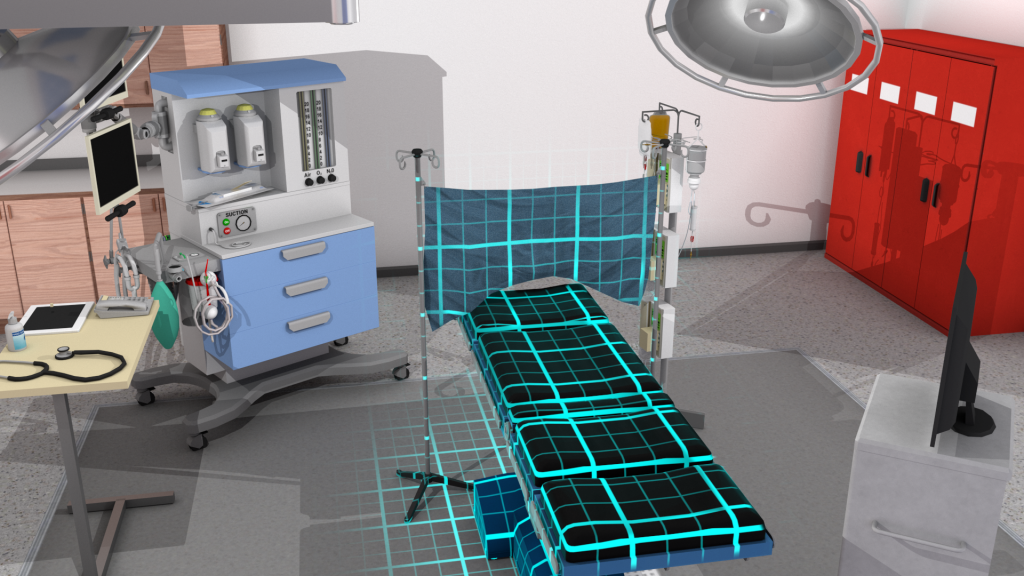UI/UX design is crucial for educational tools, influencing learning outcomes significantly. Studies show excessive clicks harm user engagement and retention. SimX’s VR simulations, which avoid traditional dropdown menus and UI elements, exemplify how intuitive design maximizes learning potential. Features like natural interactions, immersive environments, and minimized UI distractions enhance engagement, reduce cognitive load, and improve retention. User feedback indicates SimX’s approach is more engaging and less frustrating, highlighting the importance of user-friendly design in digital learning.
Advertorial
User interfaces (UI) and user experiences (UX), what’s the difference?
The user interface (UI) includes all the elements of user engagement while using a digital product or software. This includes everything from screens and touchscreens to keyboards, sounds, and even lights.
User experience (UX), on the other hand, is how a user interacts with and experiences a product, system, or service. It includes a person’s perceptions of usefulness, ease of use and efficiency.
Simply put, UI refers to the screens, buttons, toggles, icons, and other visual elements that you interact with when using a website, app, or a software. UX refers to the entire interaction you have with a product, including how you feel about the interaction.
Optimizing Learning through User-Friendly Design
Well-crafted UI/UX design can substantially improve learning experiences, whereas poor interfaces can cause frustration and disengagement. Research1-2 shows that excessive and unnecessary clicks, known as “click fatigue,” can lead to a loss of interest, which is particularly damaging in educational environments. Minimizing these interactions helps maintain user engagement and enhances educational outcomes.
Minimizing Cognitive Load: A user-friendly interface reduces the cognitive load on learners. By streamlining navigation and cutting down the number of steps required to complete tasks, learners can concentrate more on the content itself rather than figuring out how to use the tool. Research by Sweller et al.3 on cognitive load theory supports this, demonstrating that reducing extraneous cognitive load can enhance learning efficiency and effectiveness.
Increased Engagement: Effortless interaction with educational content significantly boosts user engagement and motivation. This aspect is particularly vital in VR simulations, where both immersion and interactivity are essential for an effective learning experience. As stated in multiple studies4-5, reducing unnecessary cognitive load through intuitive design and easy interaction can significantly enhance engagement and motivation in educational settings.
Improved Retention: Interfaces that reduce the number of clicks enhance information retention. When learners can easily access and interact with content, they are more likely to absorb and remember the material. Research by Mayer and Moreno5 indicates that avoiding unnecessary cognitive overload through simplified interfaces leads to better retention of information.

Challenges with Traditional UI Elements
Conventional educational software frequently uses dropdown menus, buttons, and other UI components for navigation. Although effective in some scenarios, these elements can add unnecessary complexity and interruptions. Each required click or interaction may lead to frustration, breaking the immersive experience and disrupting the learner’s cognitive flow. This can detract from the overall learning experience by diverting attention away from the content and increasing cognitive load.6
Innovative UI/UX Strategies by SimX
SimX’s user interface design incorporates several specific features that contribute to increased user engagement:
1. Elimination of Conventional UI Elements
SimX removes dropdown menus and buttons, which can often distract and frustrate users. By creating a more seamless experience, users can focus on the simulation itself rather than navigating through complex UI elements. This approach aligns with findings indicating that reducing unnecessary interactions enhances user engagement and satisfaction.
2. Natural Interactions
Users interact with the VR environment through natural gestures and movements, which mirrors real-world experiences. This intuitive interaction method not only reduces cognitive load but also enhances user involvement and engagement. Research supports that naturalistic interactions in VR can significantly increase user engagement and learning outcomes.7
3. Immersive Learning Environment
SimX’s design enhances immersion by removing traditional UI distractions. Users are fully engaged with the content, leading to a more impactful learning experience. Studies have shown that immersive learning environments lead to improved attention and retention, which are critical for effective learning.8
4. Dynamic Adaptation
SimX makes use of adaptive features that respond to user actions and preferences. Such adaptive elements can keep users engaged by providing relevant information or tools only when needed, preventing cognitive overload and maintaining focus on the learning objectives.
5. Focus on Content
Minimizing UI distractions enables learners to fully concentrate on the educational material. This focused engagement promotes a deeper understanding and better retention of the content being taught. By streamlining the interface, learners can directly interact with the material, resulting in more effective and immersive learning experiences. Research indicates that when users can focus on content without navigating through complex UI, their cognitive performance improves, leading to higher engagement levels.9
6. User-Centric Design
SimX’s design philosophy prioritizes user experience by creating an intuitive interface that aligns with users’ natural behaviors and expectations. This user-centric approach fosters a sense of control and satisfaction, which is vital for maintaining engagement over time. Studies emphasize that user-friendly designs that cater to users’ needs significantly enhance overall engagement and satisfaction.8

Evidence of SimX’s Success
The connection between user-friendly UI/UX design and successful learning is evident. Reducing clicks and interactions enhances engagement, lowers cognitive load, or amount of mental processing power needed, and improves information retention. And this is also confirmed by user feedback, with learners finding their VR simulations more engaging and less frustrating than traditional educational tools. The removal of dropdown menus and other UI elements has significantly boosted user satisfaction and improved learning outcomes.
References
1. Krug, S. (2014). Don’t Make Me Think, Revisited: A Common Sense Approach to Web Usability.
2. Nielsen, J. (2003). Usability 101: Introduction to Usability. Nielsen Norman Group
3. Sweller, J., Ayres, P., & Kalyuga, S. (2011). Cognitive Load Theory. Springer.
4. Mayer, R. E. (2009). Multimedia Learning. Cambridge University Press.
5. Mayer, R. E., & Moreno, R. (2003). Nine ways to reduce cognitive load in multimedia learning. Educational Psychologist, 38(1), 43-52.
6. Nielsen, J. (2000). Designing Web Usability: The Practice of Simplicity. New Riders Publishing.
7. Johnson-Glenberg, M. C., Birchfield, D. A., Tolentino, L., & Koziupa, T. (2014). Collaborative embodied learning in mixed reality motion-capture environments: Two science studies. Journal of Educational Psychology, 106(1), 86.
8. Dede, C., & Richards, J. (2017). The promise and perils of immersive learning. Journal of Computer Assisted Learning, 33(5), 482-494.9. Moreno, R., & Mayer, R. (2000). A learner-centered approach to multimedia explanations: Deriving instructional design principles from cognitive theory. Interactive Multimedia Electronic Journal of Computer-Enhanced Learning, 2(2), 12-20.g.
READ ALSO






































